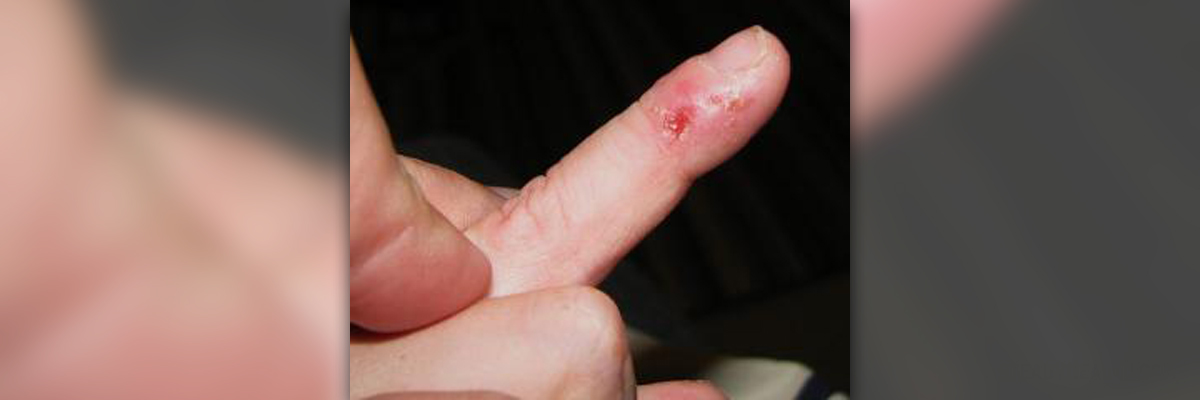
Dyshidrotic eczema is a type of eczema which features with tiny itchy blisters on the palms, fingers, and under the feet. These blisters will typically persist for two to four weeks before disappearing. Dyshidrotic eczema is an acute skin condition which may reoccur, and if left untreated it can cause many complications.
The actual cause of dyshidrotic eczema has not been identified yet. However, the condition tends to occur and aggravate during months that are associated with a change in the weather (winter). Dyshidrotic eczema has been associated with allergies, just like other kinds of eczema, as well.
Dyshidrotic eczema can affect people of all ages. There are several triggers connected with dyshidrotic eczema. They include excessive sweating, an allergic reaction to certain products or chemicals, disorders of the digestive system and certain fabrics.
What are the symptoms of dyshidrotic eczema?
The affected areas of skin will be covered with tiny, fluid-filled blisters in cases of dyshidrotic eczema. These skin lesions are itchy and painful. The skin of the palms and fingers is very dry and cracked (especially after the blisters burst). The skin may become thicker, inflamed, and red, and if the blisters burst, even infection is possible as bacteria enter. Additional characteristics of dyshidrotic eczema are nail infection and other problems with the fingernails.
Diagnosing dyshidrotic eczema
Since the skin changes seen in dyshidrotic eczema will naturally be alarming to patients, most will see a doctor soon after the blisters appear. Once the skin changes associated with dyshidrotic eczema occur, a person is advised to consult a well experienced dermatologist. The doctor will investigate the patient's medical history and perform several skin tests. These skin tests are highly effective in diagnosing dyshidrotic eczema, although the doctor will be able to suspect that this condition is to blame for the blisters almost right after looking at the affected skin.
Treatment for dyshidrotic eczema
There are many treatments which can deal with skin changes in patients suffering from dyshidrotic eczema. Some of the treatments can eradicate the disease completely. It may happen that certain treatment modalities are effective initially but they fail in case of disease recurrence. This is why all patients should try to prevent recurrence of the disease.
Antihistamines (oral forms) are the most commonly prescribed medications to patients suffering from dyshidrotic eczema. These drugs can reduce itching and inflammation, especially associated with allergic reactions. Topical medications for dyshidrotic eczema include steroid creams and cortisone or zinc oxide ointments. Only if skin changes get infected by bacteria patients are additionally prescribed antibiotics. If itching becomes unbearable it can be brought under control with Benadryl.
Some patients opt for homeopathic medications. Topical homeopathy creams used for dyshidrotic eczema are urtica urens and calendula. Even oral medications such as Nat Mur, arsenicum, graphites, sulphur and petroleum are used.
PUVA therapy is one more treatment modality for people suffering from dyshidrotic eczema. This treatment is a form of UV treatment in which the affected parts of the body are soaked in a psoralen solution and then exposed to long waves of UV light. PUVA therapy must be repeated (4-5 times per week) and may need to last for many months to provide with desirable effects.



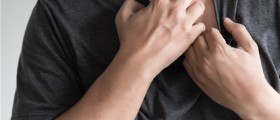
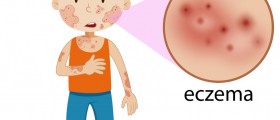



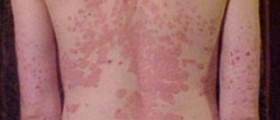

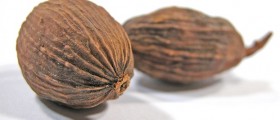

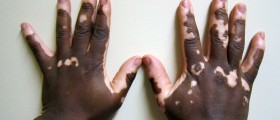




Your thoughts on this
Loading...